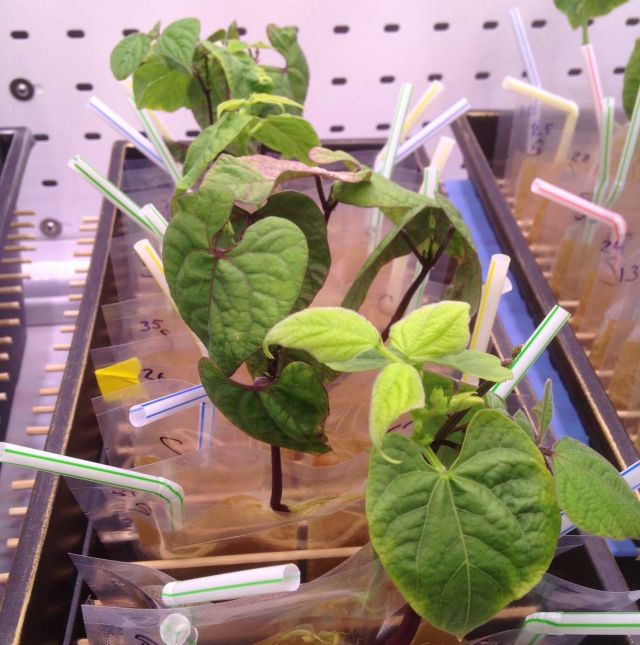
Legume-Rhizobia Symbiosis
We explore how rhizobia that poorly fix nitrogen (relative to the rest of the population) evolve, but appear to not have destabilized this classic mutualism.
Nitrogen-fixing bacteria, called rhizobia, associate with legume roots in a mutualistic symbiosis. We explore how rhizobia that poorly fix nitrogen and consume more host resources (i.e., cheaters) evolve, but appear to not undermine the mutualism.
We also study what happens to cooperation when the environment changes in such a way that one partner no longer needs the other? Or if one partner is no longer limited in a particular resource? We explore the stability of the legume-rhizobia symbiosis under various global change scenarios, including elevated CO2 and fertilizer addition.
Relevant work:
Andres Jimenez Salinas's senior research thesis (2018) poster on "The effects of elevated nitrate and CO2 on the appropriation of nitrogen and carbon in legume-rhizobia symbiosis."
Oono, R, Ho, R., Jimenez-Salinas, A. 2021. The direct and interactive effects of elevated CO2 and additional nitrate on relative costs and benefits of legume-rhizobia symbiosis. Symbiosis. 84, pp. 209–220 https://doi.org/10.1007/s13199-021-00784-2
Oono, R, KE Muller, R Ho, A Jimenez Salinas, RF Denison. 2020. How do less‐expensive nitrogen alternatives affect legume sanctions on rhizobia? Ecology and Evolution 10 (19), 10645-10656